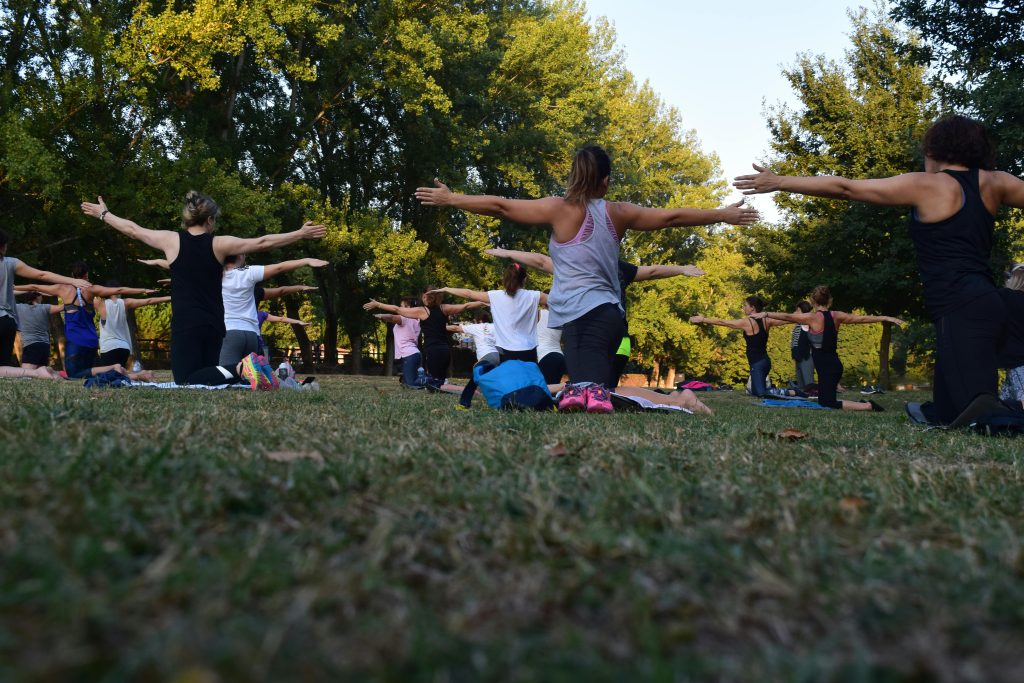Introduction: Can Wellness Be Affordable? Absolutely!
Staying healthy doesn’t have to come with a hefty price tag. In fact, many wellness habits can be done on a budget, and some of the most effective ones are completely free. You don’t need to spend thousands of dollars on fancy gym memberships, expensive supplements, or high-end health foods to feel good and live well. Whether you’re a student, a busy parent, or someone simply trying to make smarter choices, maintaining your health without breaking the bank is totally possible.
In this post, we’ll dive into practical, budget-friendly wellness tips that will leave you feeling better without draining your wallet.
1. Prioritize Whole Foods Over Processed Snacks
It’s easy to fall into the trap of buying processed, packaged foods because they’re convenient and often cheap. But here’s the truth: fresh whole foods like fruits, vegetables, grains, and lean proteins are not only healthier but can be more affordable in the long run.
- Why it matters: Whole foods are packed with nutrients your body needs, whereas processed snacks can be full of empty calories, sugar, and unhealthy fats.
- Pro Tip: Buy seasonal produce or frozen vegetables—both options are cost-effective and last longer.
Fact: According to a study published by Harvard University, a diet rich in whole foods reduces the risk of chronic diseases like heart disease and diabetes, which can ultimately save you money on medical expenses.
2. Home Workouts: Get Fit Without the Gym
You don’t need to pay for an expensive gym membership or buy fancy workout gear to stay in shape. Home workouts are incredibly effective, and there’s a wealth of free content available online—from YouTube channels to fitness apps.
- Why it’s affordable: Many home workouts require little to no equipment—think bodyweight exercises like squats, push-ups, or yoga.
- How to start: Search for beginner-friendly workouts like HIIT (High-Intensity Interval Training), yoga, or pilates. Apps like Nike Training Club and YouTube channels like Fitness Blender offer free options for all fitness levels.
Pro Tip: Set a schedule for yourself, even if it’s just 15–20 minutes a day. Consistency is key to seeing results.
Fact: A report by Statista found that the global fitness app market is worth over $4 billion, showing just how many people are switching to affordable home workouts.
3. Drink More Water
Staying hydrated is one of the simplest and most effective ways to boost your health. Instead of spending money on sugary drinks or sports beverages, focus on water as your primary source of hydration.
- Why it’s important: Water supports digestion, boosts energy, and helps your body function properly. It’s also calorie-free and accessible to nearly everyone.
- Pro Tip: Carry a refillable water bottle with you. This helps remind you to drink throughout the day and avoids the temptation of buying sodas or energy drinks.
Fact: According to the Centers for Disease Control and Prevention (CDC), drinking enough water can help prevent kidney stones, headaches, and muscle fatigue.
4. Practice Mindfulness and Meditation
Mental health is just as important as physical health, and fortunately, mindfulness practices like meditation are free!
- Why it works: Meditation and mindfulness help reduce stress, improve focus, and enhance overall well-being.
- How to start: Apps like Headspace and Calm offer free introductory meditations. Alternatively, you can find guided sessions on YouTube.
- Pro Tip: Start with just 5 minutes a day and gradually increase the time. It’s about consistency, not duration.
Fact: A study published by Psychological Science showed that just 10 minutes of mindfulness a day can reduce stress and improve emotional regulation.
5. Get Active Outdoors
Getting outdoors is one of the best and most affordable ways to improve your health. Nature has a powerful effect on mental and physical health, and all you need is a pair of comfortable shoes to enjoy its benefits.
- Why it works: Walking, hiking, or even just spending time in nature can improve your mood, lower blood pressure, and boost your immune system.
- How to start: Explore local parks, nature trails, or simply take a walk around your neighborhood.
- Pro Tip: Try walking in the morning for a dose of fresh air and sunlight, which can also help regulate your sleep cycle.
Fact: Studies have shown that spending 20 minutes a day in nature can significantly improve mental clarity and lower stress levels.
6. Sleep Is Your Best Investment
You don’t need to spend money on expensive sleep aids or therapy to get a good night’s rest. The secret to better sleep is simple: build a solid routine.
- Why it matters: A good night’s sleep is essential for physical recovery, mental health, and overall well-being.
- How to improve sleep: Create a calming bedtime routine, avoid screens an hour before sleep, and keep your bedroom cool and dark.
- Pro Tip: Stick to a consistent sleep schedule. Go to bed and wake up at the same time every day, even on weekends.
Fact: According to the National Sleep Foundation, adults who consistently get 7–9 hours of sleep a night have better cognitive function, a stronger immune system, and a lower risk of chronic diseases.
7. Grow Your Own Herbs or Veggies
Did you know you can start your own herb garden for less than $20? Growing your own food is not only a fun activity but can also save you money and give you access to fresh, nutritious ingredients.
- Why it’s affordable: Once established, home-grown herbs and vegetables can provide fresh ingredients for months or even years.
- How to start: Start small with herbs like basil, mint, or parsley, which are easy to grow in small spaces like windowsills or balconies.
- Pro Tip: Buy seeds or starter plants from local farmers’ markets or gardening stores for the best prices.
Fact: According to The National Gardening Association, the average home gardener can save $200–$300 per year by growing their own herbs and vegetables.
8. Avoid Unnecessary Subscriptions
In our modern world, it’s easy to rack up monthly subscriptions—streaming services, fitness apps, and even wellness products. Cutting back on these non-essential services can free up money for other wellness activities.
- Why it works: Subscriptions can quickly add up, and many services offer free alternatives.
- How to save: Evaluate your subscriptions and see what you can live without. Use free or low-cost alternatives instead, such as using YouTube for workouts or podcasts for learning.
- Pro Tip: Use a budgeting app to keep track of your spending and avoid overspending on digital services.
Fact: A study by Consumer Reports showed that the average American spends $640 per year on subscriptions, many of which go unused.
9. Build Healthy Habits Slowly
When it comes to wellness, trying to change everything at once can be overwhelming. Instead, focus on building one habit at a time. Small, gradual changes can lead to lasting results.
- Why it works: Changing habits is a process, and trying to do too much at once can lead to burnout.
- How to start: Pick one small habit, like drinking more water or exercising for 10 minutes a day, and stick with it for a month. Then, gradually add another healthy habit.
- Pro Tip: Celebrate small wins along the way to keep yourself motivated.
Fact: Research by Psychology Today suggests that it takes about 21 days to form a new habit, so consistency is key!
Wellness Without the Price Tag
Living a healthy life on a budget doesn’t require sacrificing your well-being. By incorporating small, simple habits into your routine, you can improve your physical and mental health while saving money. Remember, wellness is about consistency and making small changes that fit your lifestyle. From drinking more water to getting active outdoors, these affordable wellness tips are a great way to prioritize your health without breaking the bank.
Start today, and see how much better you can feel—without spending a fortune.


Very good https://lc.cx/xjXBQT
Very good https://is.gd/N1ikS2
Awesome https://is.gd/N1ikS2
Good https://is.gd/N1ikS2
Awesome https://shorturl.fm/5JO3e
Good partner program https://shorturl.fm/m8ueY
https://shorturl.fm/a0B2m
https://shorturl.fm/YvSxU
https://shorturl.fm/YvSxU
https://shorturl.fm/j3kEj
https://shorturl.fm/A5ni8
https://shorturl.fm/68Y8V
https://shorturl.fm/bODKa
https://shorturl.fm/9fnIC
https://shorturl.fm/XIZGD
https://shorturl.fm/68Y8V
https://shorturl.fm/A5ni8
https://shorturl.fm/68Y8V
https://shorturl.fm/m8ueY
https://shorturl.fm/68Y8V
https://shorturl.fm/TbTre
https://shorturl.fm/5JO3e
https://shorturl.fm/m8ueY
https://shorturl.fm/YZRz9
https://shorturl.fm/nqe5E
https://shorturl.fm/xlGWd
https://shorturl.fm/0EtO1
https://shorturl.fm/VeYJe
https://shorturl.fm/xlGWd
https://shorturl.fm/0EtO1
https://shorturl.fm/xlGWd
https://shorturl.fm/ypgnt
https://shorturl.fm/VeYJe
https://shorturl.fm/uyMvT